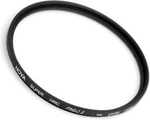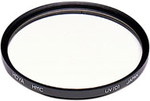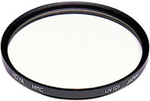Hoya Protector Pro 1 Digital 52

-
Hoya 52mm UV HMC Filter Unboxing & Installation
These are the first filters that every photographer should ensure they own. These are filters that can be left on your lenses. UV filters should be constantly fitted to a lens to give improved clarity and colour balance as well as offering protection to your lens.
-
Circular Polarizer (CPL) Filters Tutorial
Questions? Go here: www.youtube.com Explanation on understanding the benefits of circular polarizer (CPL) glass filters. We do NOT recommend those unlisted brands: Bower, Canon, Fujiyama, Hitech, Kenko, Marumi, Polaroid, and Sigma.
-
Hoya Circular Polarizer Review
A short review of the Hoya Circular Polarizing filter (67mm) and example of how it reduces reflection and improves colour and contrast.
-
Ultraviolet (UV) Filters Tutorial
Questions? Go here: www.youtube.com Explanation on understanding the benefits of ultraviolet (UV) glass filters. We do NOT recommend those unlisted brands: Bower, Canon, Fujiyama, Hitech, Kenko, Marumi, Polaroid, and Sigma.
-
Field test: Neewer 52mm ND Fader Neutral Density Adjustable Variable Filter (ND2 to ND400)
This was just under $14 on Amazon. I didn't see any information on it anywhere, so I put up some test footage. I'm basically just going from the MIN and turning to where it isnt over exposed. Its a good way to maintain a given shutter speed, aperture and ISO. I also have a knockoff Hoya Pro 1 UV filter in between the camera and nd filter. I know, spend $$$$ on a camera and $$$ on a lens, then $ on everything else. But I need to experiment to see what I really need, and can always upgrade to better stuff later. The video is kinda shaky, as I started the video 7 miles into my hike, and the bugs started attacking me. Too tired to break out the monopod. Removed audio as its either just wind, bugs zipping around, or me cursing at said bugs. Using YT music to bypass the copyright hassle. Until I'm better at filming, this ND filter is good enough, especially for the $$. The best accessory I have for the 60D, aside from the 3" Carry Speed LCD View Finder. Video taken at Rancho San Antonio, top of PG&E Trail.
-
Closer Look: ProMaster Digital HGX Filters Overview by OneCall
You should protect all of your lenses, and there's no better solution for lens protection than the ProMaster Digital HGX Filters. These filters, which range in size from 52mm all the way up to 77mm, come in two forms: the HGX UV Protection Filter (great for clearer photos in less than ideal weather) and the HGX Circular Polarizing Filter (great for increasing color and saturation). Both styles are unique in that they have low profile frames (which allows for use on wide angle lenses), feature solid hard glass, a scratch resistant surface, an advanced anti-reflective coating and a satin-like finish around the edge, which minimizes reflective light. Don't let your lenses be at the whim of your surroundings! Protect them with ProMaster Digital HGX Filters. Click here to see all of the Digital HGX Filters OneCall carries: www.onecall.com
-
Hoya Pro1 Digital CPL filter
hoya pro1 digital cpl filter , polarizing demostration | music: B3- letná
-
How to put a filter on a lens
Today I demonstrate how to put a B+W UV / IR cut filter (77mm) onto my Canon 24-105 F4 L IS USM lens. Although I used my lens, the same procedure is for all diameter front-on lenses. Screw them in. A UV / IR filter helps to reduce interruptions due to UV and IR interference, and can be left on as a normal "protective" filter as well. I personally recommend either B+W or Heliopan as their quality controls are the strictest of the filter manufacturers
-
Hoya 52mm HMC UV Digital Multi-Coated Slim Frame Glass Filter for my Nikon d5100 kit lenses
You can buy these exact Hoya filters from Amazon here: www.amazon.com Bought two Hoya filters from Amazon for the lenses that came with my Nikon d5100. Cheap protection at $12 each.
-
Hoya Pro1
Acquista da Sito Amazon IT www.amazon.it Customer Reviews: "Conosco ed uso il Protector Pro1 della Hoya da qualche anno e lo uso con grande soddisfazione sul Nikkor Afs 70-300 Vr essendone diventato parte integrante. Ne ho preso altri due per il 16-85 ed il 35mm. Se è vero che, per molti puristi, l'utilizzo di un filtro di protezione su un'ottica, per quanto di elevata qualità , costituisce sempre comunque un'alterazione del disegno ottico, è altrettanto vero che sfiderei chiunque a trovare differenze anche impercettibili in foto scattate con o senza questo filtro in condizioni "normali" ed è difficile che si riscontrino riflessi parassiti anche in condizioni critiche, che non siano imputabili già all'ottica originaria. Il Protector è virtualmente invisibile! Il vetro ottico è di qualità eccellente ed esente da qualsiasi colorazione anche lieve. Appoggiato su un foglio bianco non ne altera in alcun modo la visibilità e colorazione. Se osservato in trasparenza, può dare la netta sensazione di trovarsi di fronte ad un anello filettato senza lente dentro! L'anello, poi, è decisamente più stretto della gran parte dei classici filtri, diminuendo di molto lo spessore dell'aria presente tra filtro e lente frontale, con conseguente contenimento degli eventuali riflessi parassiti e del rischio vignettatura e dell'alterazione della "sagoma" e dimensioni dell'ottica, della quale diventa parte <b>...</b>
















